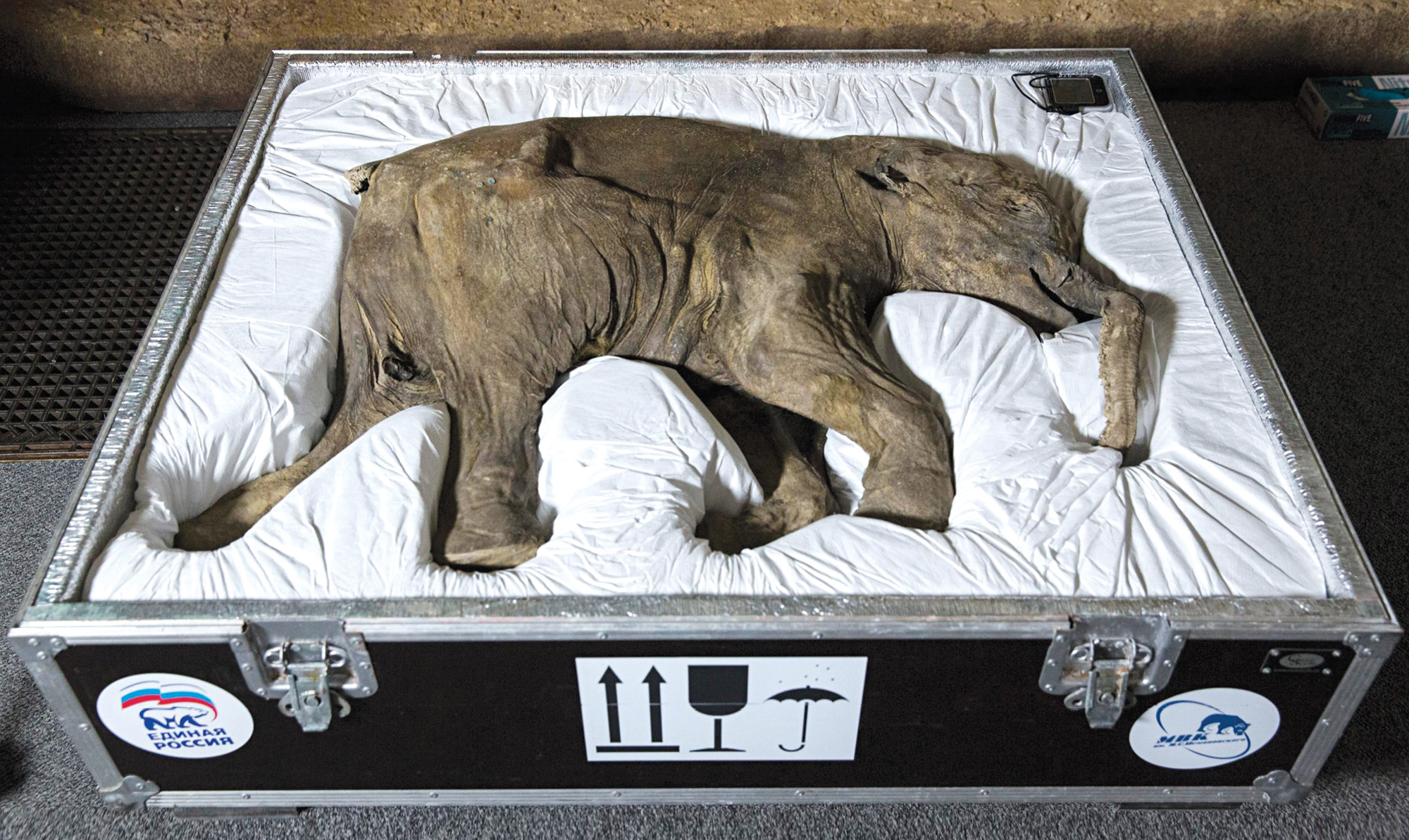Winter 2015–2016
Interstitial Image

Lyuba, the world’s most complete mammoth specimen, drowned in a mudhole during the late Pleistocene ice age. She was discovered in 2006 by Yuri Khudi, a reindeer herder from Russia’s autonomous Yamal-Nenets region, who named her after his wife. Usually housed in Siberia's Shemanovsky Museum, she was shipped to London’s Natural History Museum for an exhibition in 2014. Here she is in the wooden crate purpose-built for the journey—as gently cradled by the cloth and form-fitting foam as by the mud that preserved her for forty-two thousand years.
Spotted an error? Email us at corrections at cabinetmagazine dot org.
If you’ve enjoyed the free articles that we offer on our site, please consider subscribing to our nonprofit magazine. You get twelve online issues and unlimited access to all our archives.